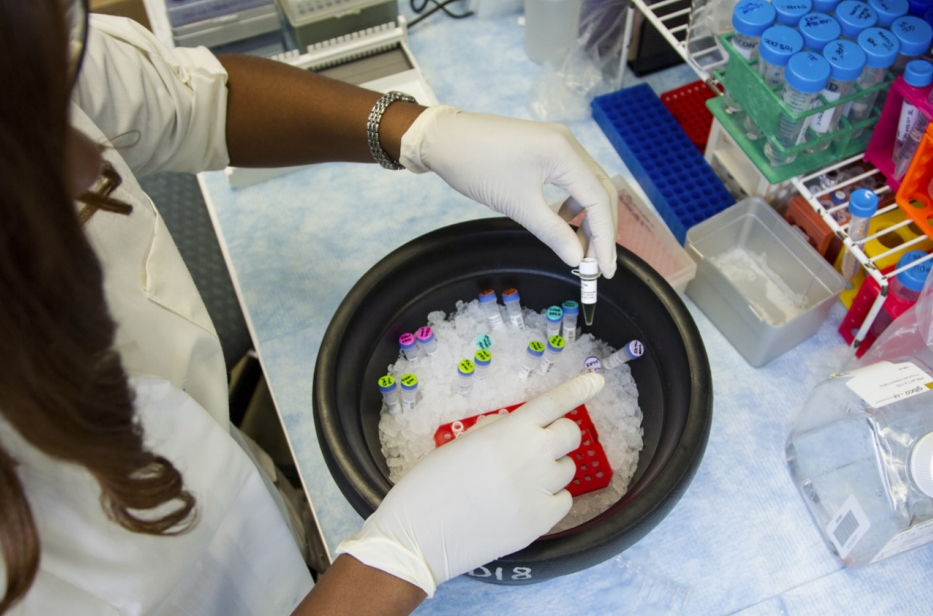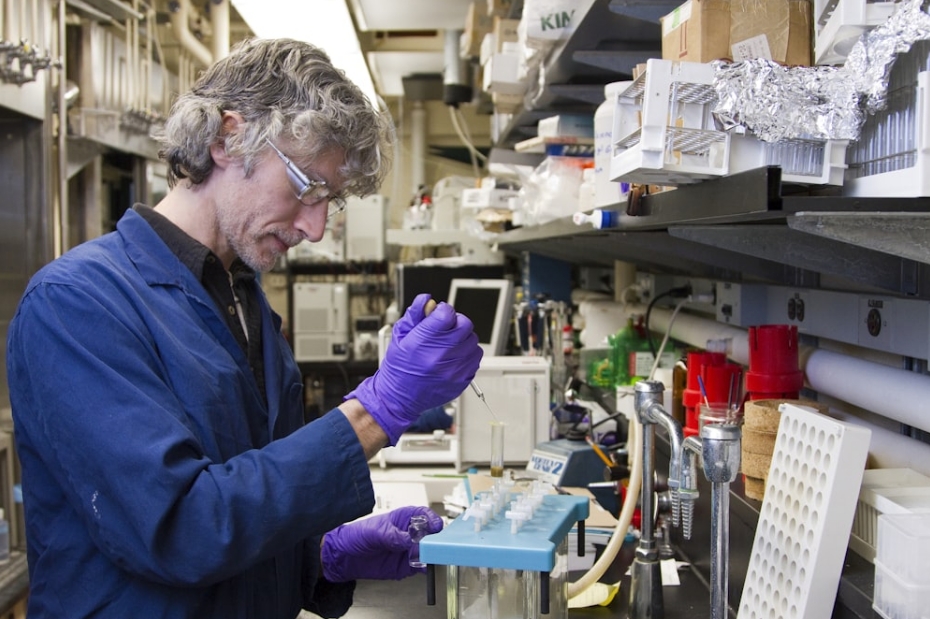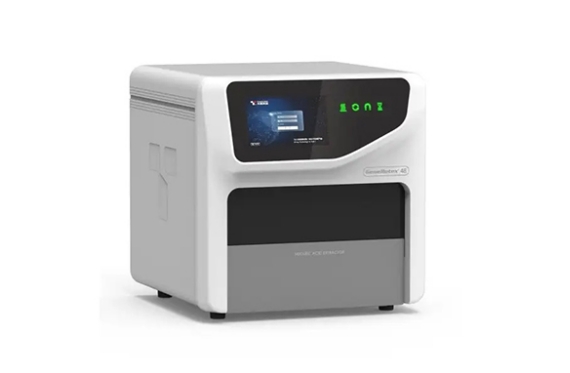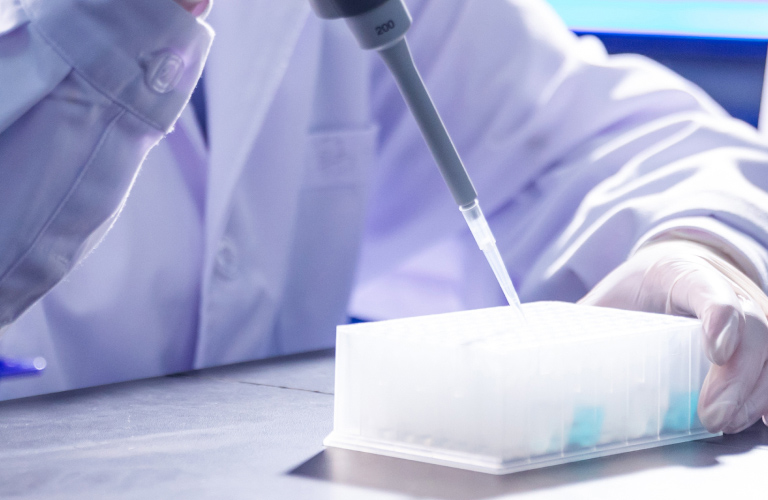In pursuing molecular studies, researchers frequently encounter the formidable challenge of lab contamination, particularly during DNA and RNA extraction processes. Such contamination not only compromises the integrity of scientific data but can lead to significant delays and increased costs in research.
As scientists seek to unlock the secrets held within genetic materials, extraneous nucleic acids can severely skew results, leading to misleading conclusions. Given the critical importance of accurate data in molecular biology, addressing lab contamination is paramount.
This article delves into practical strategies to mitigate contamination risks during the crucial stages of DNA and RNA extraction, ensuring more reliable and accurate research outcomes.

DNA and RNA Extraction Processes: Manual and Automated Methods
Manual Steps
The process of manually extracting DNA and RNA begins with cell lysis, where cell membranes are disrupted to release nucleic acids. This is often achieved through physical means like grinding or using chemical lysing agents. Subsequent steps involve treating the solution to remove proteins and other contaminants, typically using enzymes such as protease or organic solvents.
After purification, nucleic acids are precipitated from the solution, usually with alcohol, and collected by centrifugation. The final step is washing and resuspending the DNA or RNA in a suitable buffer, preparing it for further analysis.
Automatic Solution: Automated Nucleic Acid Extraction Systems
Automated nucleic acid extraction systems provide a more streamlined and standardized approach compared to manual methods. These systems utilize robotic mechanisms and pre-packed cartridges containing all necessary reagents, processing multiple samples simultaneously.
The automated process follows the core steps of lysis, purification, and recovery, integrated into a single, closed system. This not only improves efficiency but also minimizes the risk of contamination and human error. Automated systems are particularly valuable in high-throughput settings, enhancing both reproducibility and scalability.
Risks of Lab Contamination During DNA and RNA Extraction
Contamination during the extraction of DNA and RNA can occur at various stages, primarily due to the sensitive nature of the procedures involved. Understanding these risks is vital for implementing effective countermeasures:
Cross-Contamination
Handling multiple samples can simultaneously lead to cross-contamination if equipment and surfaces are not properly sanitized between procedures.
Environmental Contaminants
Airborne particles, microbial contamination, and even previously amplified DNA can introduce nucleic acid contaminants into the sample.
Reagent Contamination
Reagents used in extraction processes can be contaminated with DNA or RNA from their manufacturing environment, potentially leading to false results.
Human Error
Mishandling of samples, improper use of equipment, and failure to follow protocols meticulously can all introduce contaminants into the extraction process.
Strategies to Minimize Lab Contamination
To safeguard the integrity of DNA and RNA extraction processes, several proactive strategies can be employed:

Rigorous Protocol Adherence
Ensuring that all laboratory personnel are trained in and strictly adhere to standardized protocols can significantly reduce human error.
Use of Barrier Methods
Implementing physical barriers, such as gloves and face masks, and using dedicated tools for different stages of the extraction process can help prevent cross-contamination.
Regular Equipment Maintenance and Calibration
Keeping all laboratory equipment well-maintained and regularly calibrated minimizes the risks of mechanical errors leading to contamination.
Quality Control Measures
Regularly testing reagents for contamination and employing negative controls in extraction runs can help identify and mitigate contamination sources promptly.
Employment of Enclosed Automated Systems
Utilizing automated nucleic acid extraction systems that operate within a closed environment can drastically reduce the exposure of samples to potential contaminants.
By integrating these strategies into daily laboratory operations, researchers could lower the chances of lab contamination. It improves the reliability and accuracy of their DNA and RNA extraction results, ensuring that their findings are both valid and reproducible.
Introducing Tianlong's GeneRotex 96 Nucleic Acid Extractor
Tianlong's GeneRotex 96 Nucleic Acid Extractor represents a significant advancement in the field of automated nucleic acid extraction, offering a host of features designed to minimize lab contamination. This nucleic acid extraction machine is viably engineered to handle the complexities of DNA and RNA extraction with precision and reduced risk of lab contamination. Here are the key features of this automatic nucleic acid extraction machine:

RMT Technology
A distinguishing feature of the GeneRotex 96 Nucleic Acid Extractor is its use of self-developed Rotational Mixing Technology (RMT). Traditional oscillation-based mixing methods are prone to generating aerosols, which can carry nucleic acids and other contaminants, posing a substantial risk for cross-contamination. The RMT technology equipped at GeneRotex 96 Nucleic Acid Extractor reduces aerosol generation by over 50% compared to conventional techniques. By minimizing aerosol production, the risk of cross-contamination is significantly lowered, thereby enhancing the accuracy and reliability of experimental results.
Advanced HEPA Filtration and Negative Pressure System
The GeneRotex 96 Nucleic Acid Extractor incorporates an advanced HEPA filtration system in conjunction with a negative pressure airflow mechanism when doing DNA and RNA extraction. The built-in HEPA filter is highly efficient in capturing airborne particles, including potential contaminants. The negative pressure system ensures that expelled air is effectively filtered, greatly reducing the risk of environmental contamination.
This dual-layer protection system not only maintains the integrity of the samples but also curbs the chances of lab contamination, enhancing the safety of personnel and other experiments.
Integrated UV Disinfection
The GeneRotex 96 Nucleic Acid Extractor features integrated UV disinfection capabilities. Equipped with UV lamps, this automatic nucleic acid extraction system can be programmed to disinfect the working area before and after each use. UV disinfection is a well-established method for creating a sterile environment for DNA and RNA extraction, providing additional protection against contamination in the lab.
Automated Door System
Human error is a common source of contamination in laboratory settings. The GeneRotex 96 Nucleic Acid Extractor addresses this issue with its automated door system, which uses a motor-driven component to open and close the chamber doors without manual handling. This reduces the risk of contamination from human contact with potentially contaminated surfaces as handling the DNA and RNA extraction tasks.
Other Features
Except for advanced disinfect measure and automatic features to complete the DNA and RNA extraction better, here are more features of GeneRotex 96 Nucleic Acid Extractor to present the fast, high-capacity, and reliable nucleic acid result:
1. High Throughput and Efficiency: Capable of handling anywhere from 1 to 96 samples per run, the GeneRotex 96 Nucleic Acid Extractor accommodates 96 deep-well plates and six tube strips. This design ensures high throughput while reducing reagent waste, optimizing both resource usage and experimental scalability.
2. Built-in Full-Color Touch Screen:The inclusion of a 7-inch color LCD touch screen makes the system user-friendly and simplifies the operation of complex experiments.
3. High Purification: With less than 1% residual magnetic beads after purification, the GeneRotex 96 Nucleic Acid Extractor delivers high-purity nucleic acids, which is essential for reliable experimental results.
These innovative features make the Tianlong GeneRotex 96 Nucleic Acid Extractor an essential tool for laboratories where they seek effectiveness and efficiency of the nucleic acid extraction techniques while significantly reducing the potential for lab contamination.
Conclusion
Minimizing lab contamination during DNA and RNA extraction is crucial for achieving reliable and accurate molecular research outcomes. By understanding the possibility of contamination and implementing robust preventive strategies, researchers can significantly enhance the integrity of their experimental results. The adoption of advanced machines, like Tianlong's GeneRotex 96 Nucleic Acid Extractor, plays a pivotal role in this process. With features such as advanced EMT technology, HEPA Filtration, high-throughput capabilities, and more, the GeneRotex 96 Nucleic Acid Extractor sets a new standard in minimizing contamination risks.
This nucleic acid extraction machine is also an embodiment of Tianlong's extensive experience and commitment to innovation in the molecular study industry, positioning us as a trusted leader. By choosing us, Tianlong, researchers not only invest in superior technology but also gain a partner renowned for its expertise and reliability in facilitating groundbreaking molecular discoveries. You can visit Tianlong’s official website to learn more.

